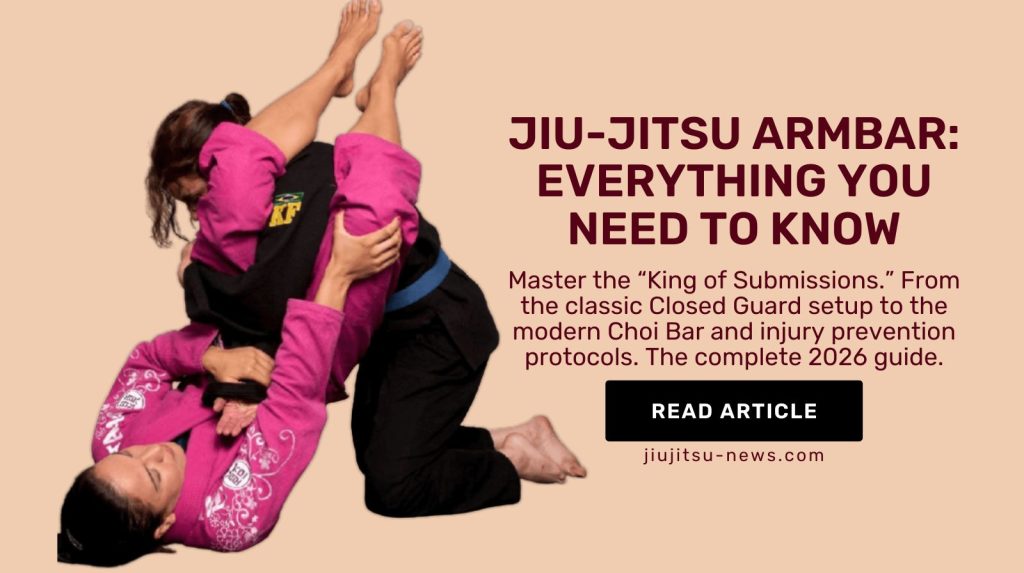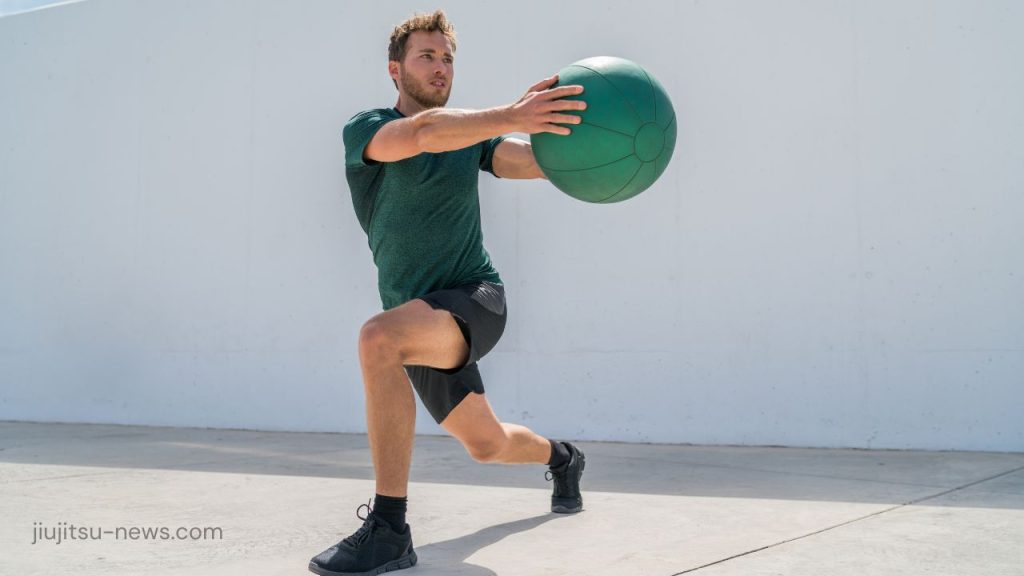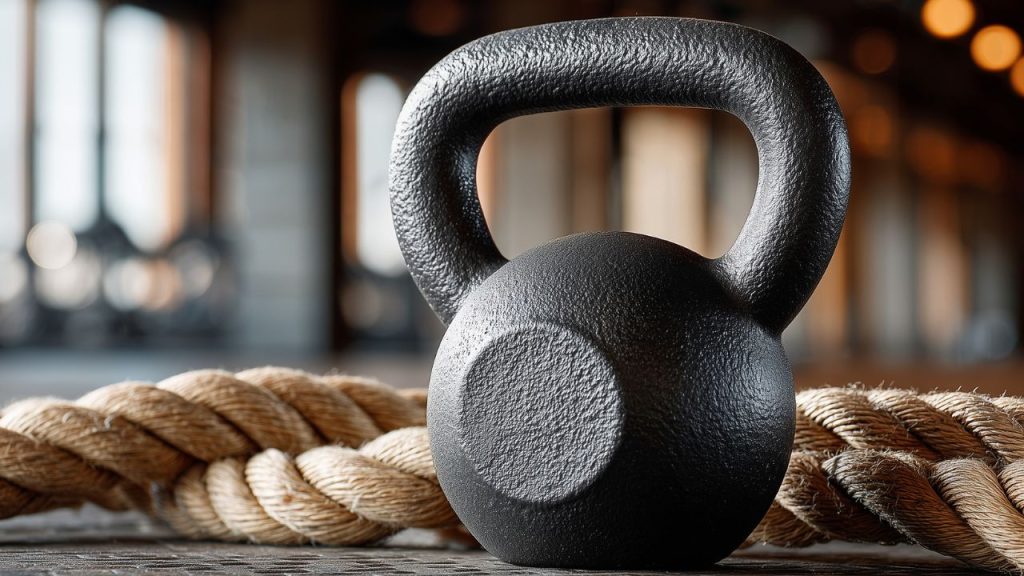Mastering IBJJF Weight Classes: A Detailed Guide!
Excelling in competition starts with the scale. A complete breakdown of Gi, No-Gi, and Juvenile weight divisions to help you step onto the tournament mat with strategic confidence.
Excelling in jiu-jitsu competitions becomes significantly more manageable when you grasp the intricacies of the IBJJF weight classes. Understanding these specific weight categories will set you up for success in top Gi or No-Gi IBJJF tournaments.
IBJJF competitions are inclusive, accommodating athletes of all ages and skill levels through a comprehensive range of weight and age categories. Whether you are a young enthusiast or a seasoned adult, there is a division that matches your capability.
Strategic Insight: Weight classes in Gi competitions include the weight of your uniform (approx. 3-5 lbs), while No-Gi classes weigh you in rashguard and shorts. Choosing the right class requires calculating this gear weight!
Male Adults/Masters Gi Divisions
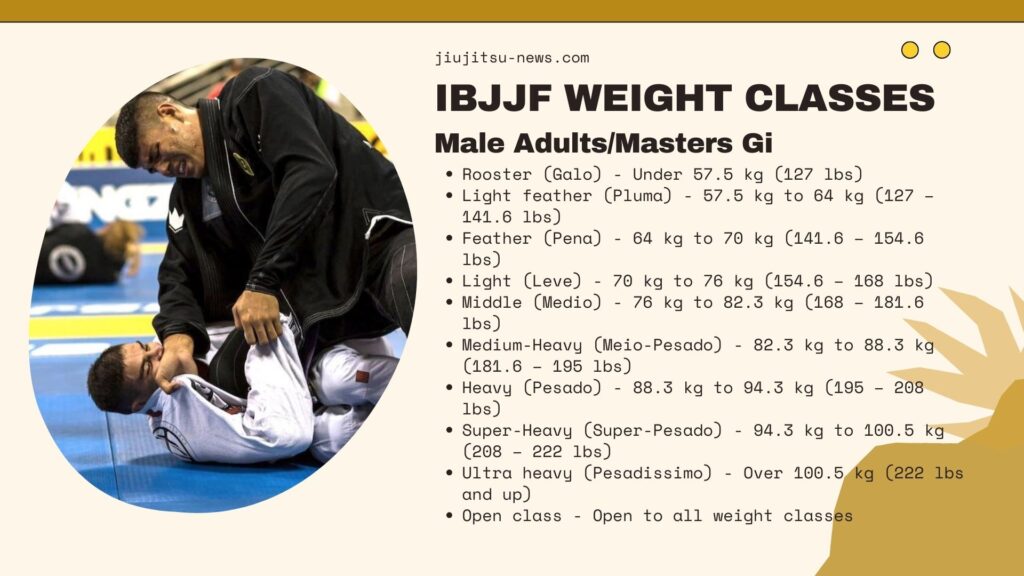
The Gi weight classes are slightly heavier compared to the No-Gi divisions to reflect the additional weight of the Gi outfit. These limits are strictly enforced with the athlete wearing their full uniform.
| Division Name | Weight Limit (KG) | Weight Limit (LBS) |
|---|---|---|
| Rooster (Galo) | 57.5 kg | 127.0 lbs |
| Light Feather (Pluma) | 64.0 kg | 141.6 lbs |
| Feather (Pena) | 70.0 kg | 154.6 lbs |
| Light (Leve) | 76.0 kg | 168.0 lbs |
| Middle (Medio) | 82.3 kg | 181.6 lbs |
| Medium-Heavy (Meio-Pesado) | 88.3 kg | 195.0 lbs |
| Heavy (Pesado) | 94.3 kg | 208.0 lbs |
| Super-Heavy (Super-Pesado) | 100.5 kg | 222.0 lbs |
| Ultra Heavy | No Limit | No Limit |
| Open Class | Varies | Varies |
Female Adults/Masters Gi Divisions
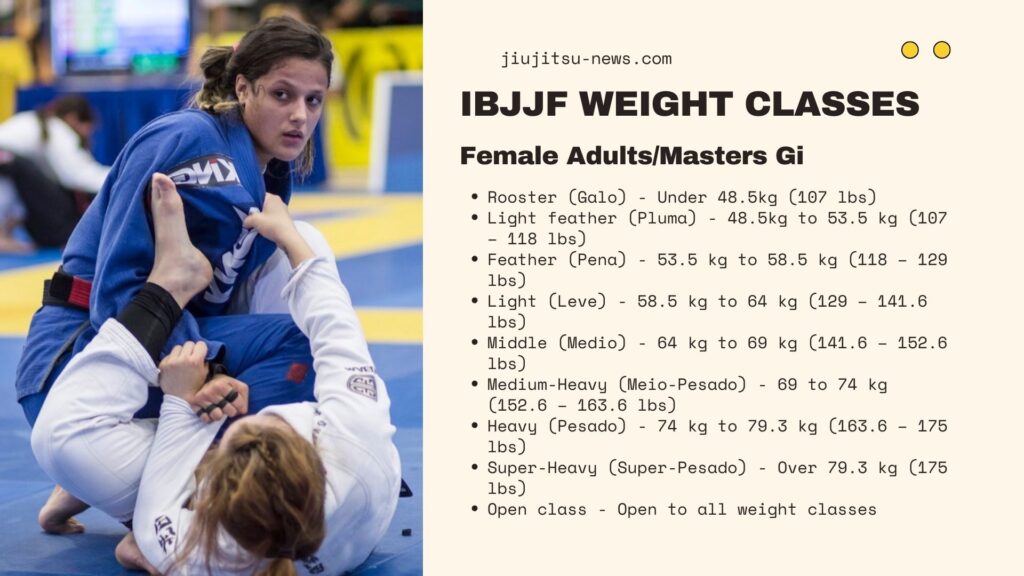
Female divisions are designed to ensure athletes compete against others of similar body mass. Like the male divisions, these weights include the Gi.
| Division Name | Weight Limit (KG) | Weight Limit (LBS) |
|---|---|---|
| Rooster (Galo) | 48.5 kg | 107.0 lbs |
| Light Feather (Pluma) | 53.5 kg | 118.0 lbs |
| Feather (Pena) | 58.5 kg | 129.0 lbs |
| Light (Leve) | 64.0 kg | 141.6 lbs |
| Middle (Medio) | 69.0 kg | 152.6 lbs |
| Medium-Heavy (Meio-Pesado) | 74.0 kg | 163.6 lbs |
| Heavy (Pesado) | 79.3 kg | 175.0 lbs |
| Super-Heavy (Super-Pesado) | No Limit | No Limit |
Male Adults/Masters No-Gi Divisions
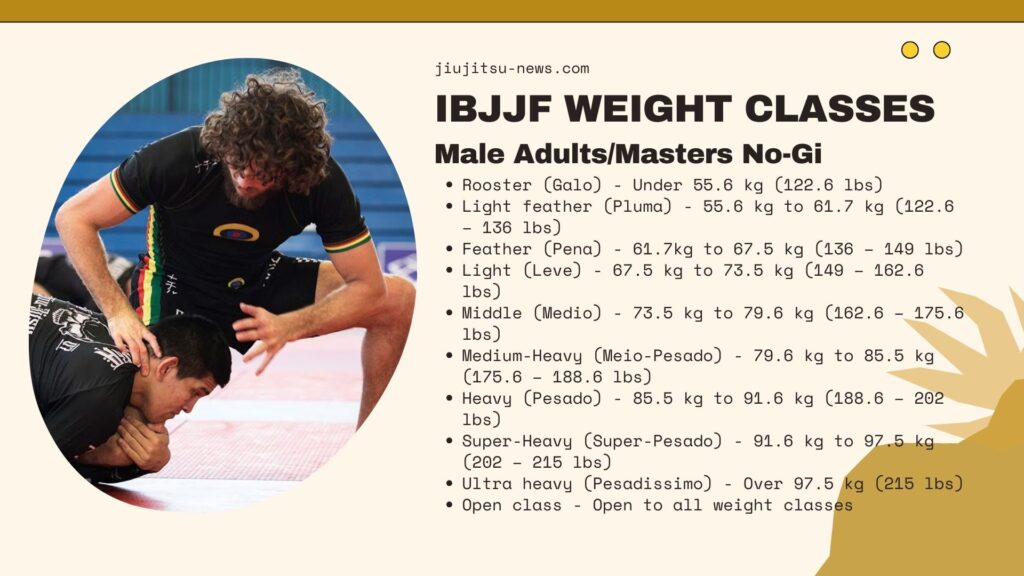
No-Gi competitions remove the heavy uniform, resulting in lower weight limits. Competitors weigh in wearing their competition rashguard and shorts.
| Division Name | Weight Limit (KG) | Weight Limit (LBS) |
|---|---|---|
| Rooster (Galo) | 55.6 kg | 122.6 lbs |
| Light Feather (Pluma) | 61.7 kg | 136.0 lbs |
| Feather (Pena) | 67.5 kg | 149.0 lbs |
| Light (Leve) | 73.5 kg | 162.6 lbs |
| Middle (Medio) | 79.6 kg | 175.6 lbs |
| Medium-Heavy (Meio-Pesado) | 85.5 kg | 188.6 lbs |
| Heavy (Pesado) | 91.6 kg | 202.0 lbs |
| Super-Heavy (Super-Pesado) | 97.5 kg | 215.0 lbs |
| Ultra Heavy | No Limit | No Limit |
Female Adults/Masters No-Gi Divisions
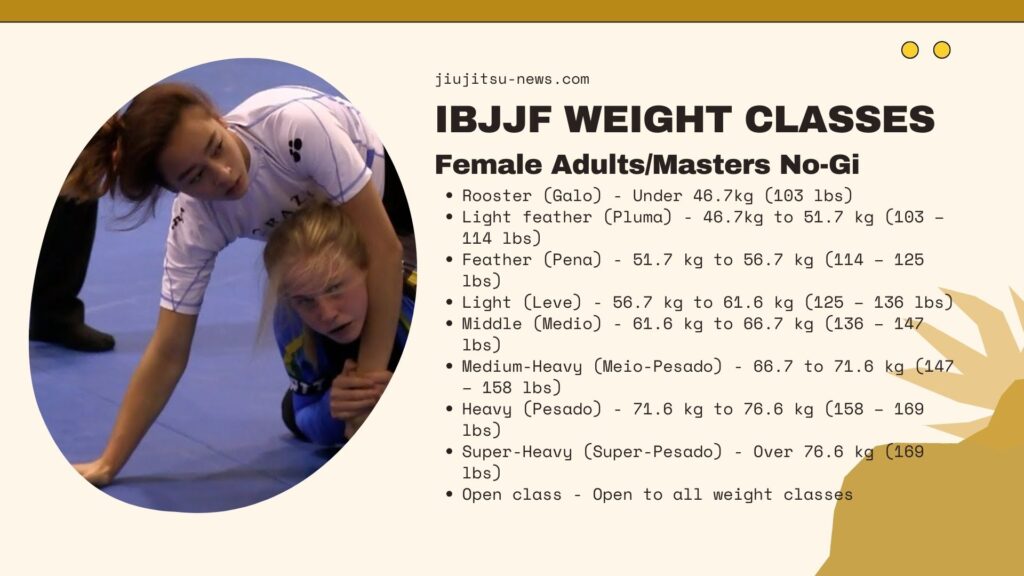
| Division Name | Weight Limit (KG) | Weight Limit (LBS) |
|---|---|---|
| Rooster (Galo) | 46.7 kg | 103.0 lbs |
| Light Feather (Pluma) | 51.7 kg | 114.0 lbs |
| Feather (Pena) | 56.7 kg | 125.0 lbs |
| Light (Leve) | 61.6 kg | 136.0 lbs |
| Middle (Medio) | 66.7 kg | 147.0 lbs |
| Medium-Heavy (Meio-Pesado) | 71.6 kg | 158.0 lbs |
| Heavy (Pesado) | 76.6 kg | 169.0 lbs |
| Super-Heavy (Super-Pesado) | No Limit | No Limit |
Juvenile Gi Divisions (Male & Female)
Juvenile divisions (ages 16-17) use specific weight classes to foster fair development for growing athletes. These classes are critical transition points before entering the Adult divisions.
| Rooster | 118.0 lbs |
| Light Feather | 129.0 lbs |
| Feather | 141.6 lbs |
| Light | 152.6 lbs |
| Middle | 163.6 lbs |
| Med-Heavy | 175.0 lbs |
| Heavy | 186.0 lbs |
| Super-Heavy | 197.0 lbs |
| Ultra-Heavy | No Max |
| Rooster | 98.0 lbs |
| Light Feather | 106.6 lbs |
| Feather | 116.0 lbs |
| Light | 125.0 lbs |
| Middle | 133.6 lbs |
| Med-Heavy | 143.6 lbs |
| Heavy | 152.0 lbs |
| Super-Heavy | No Max |
Crucial Weigh-In Rules You Must Know
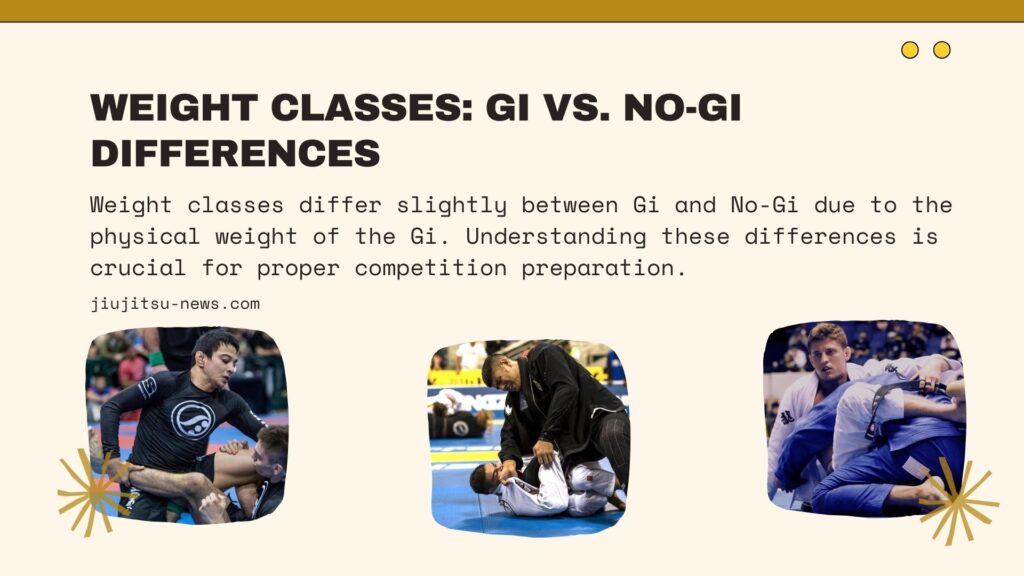
Strict Zero Tolerance: IBJJF has a strict zero-tolerance policy. If you weigh 0.1 lbs over your limit, you will be immediately disqualified. There is no second chance and no refund.
1. When do I weigh in?
Unlike MMA or wrestling, you weigh in moments before your first match. This prevents dangerous weight cutting and ensures you compete close to your natural weight. Do not expect 24 hours to rehydrate!
2. What do I wear?
Gi Competitions: You must weigh in wearing your full Gi (Jacket, Pants, and Belt). A standard Gi weighs 3.5–5 lbs, so factor this into your weight cut.
No-Gi Competitions: You weigh in wearing your rashguard and grappling shorts. You cannot weigh in underwear or naked.
3. Changing Divisions
You generally cannot change divisions on the day of the event. If you miss weight, you are out. Always register for a weight you can comfortably make with your gear on.
Conclusion: Choosing Your Battleground

In the dynamic world of Brazilian Jiu-Jitsu, understanding IBJJF weight classes is a strategic necessity. Whether you are a novice or a seasoned Master competitor, knowing exactly where you fit allows you to focus on your technique rather than the scale.
Remember: It is almost always better to compete at a weight where you feel strong and energized rather than depleting yourself to hit a lower number. Choose the division that matches your body type, factor in your Gi weight, and step onto the mats with confidence.
Pro Tip: Weigh yourself with your competition Gi on at least 2 weeks before the tournament. If you are within 1-2 lbs of the limit, you are safe. If you are close to the limit, strict diet discipline is required.

